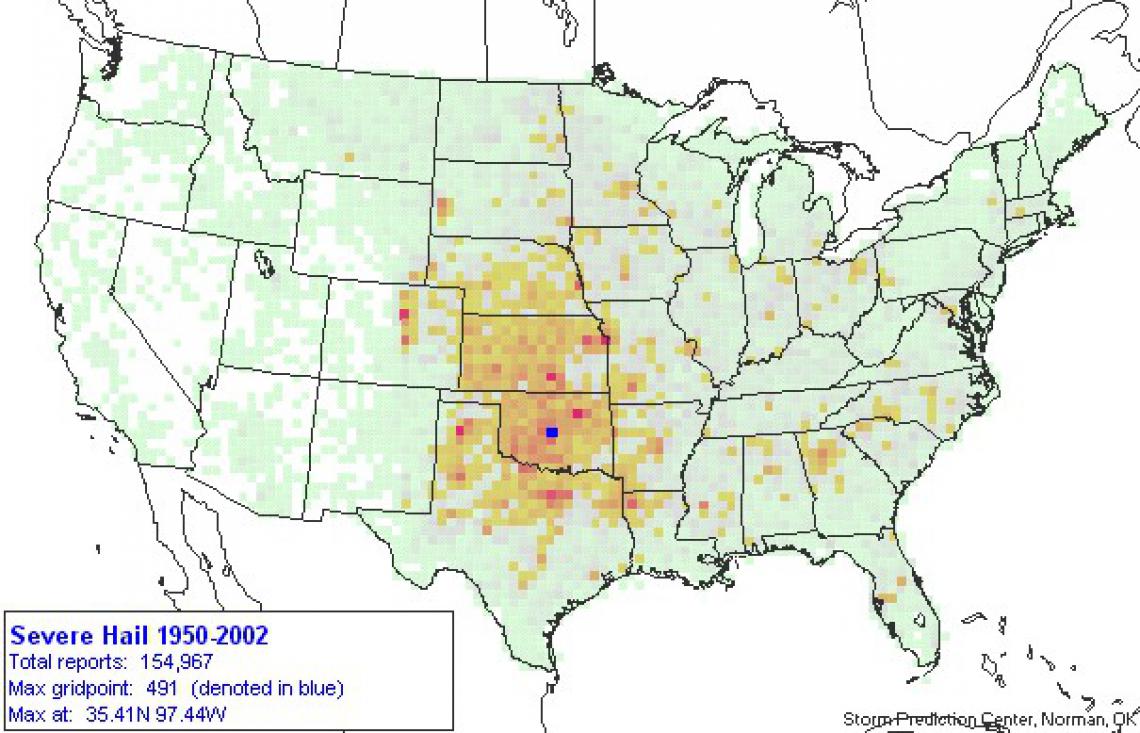Climate Viticulture Newsletter - 2019 August
< Back to Climate Viticulture Newsletter
Hello, everyone!
This is the 2019 August issue of the Climate Viticulture Newsletter – a quick look at some timely climate topics relevant to winegrape growing in Arizona and New Mexico.
A Recap of July Temperature and Precipitation
Monthly average temperatures in July were 2° to 6° Fahrenheit above the 1981-2010 average for much of southern Arizona and New Mexico (orange colors on map), and within 2° Fahrenheit of normal for the rest of the region (yellow and light green areas on map). In contrast to June of this year, there were days this past month when excessive heat may have made an appearance in relatively warmer winegrape growing areas. I jotted down July 15 and 20 as two such days in the Willcox and proposed Verde Valley American Viticultural Areas (AVAs), respectively. From a vine’s perspective, excessive heat can mean daytime temperatures above 95° to 100° Fahrenheit, the point at which losses through respiration become greater than gains from photosynthesis and phenological development grinds to halt.
2019-aug-last1m-temp-noaa-acis.png
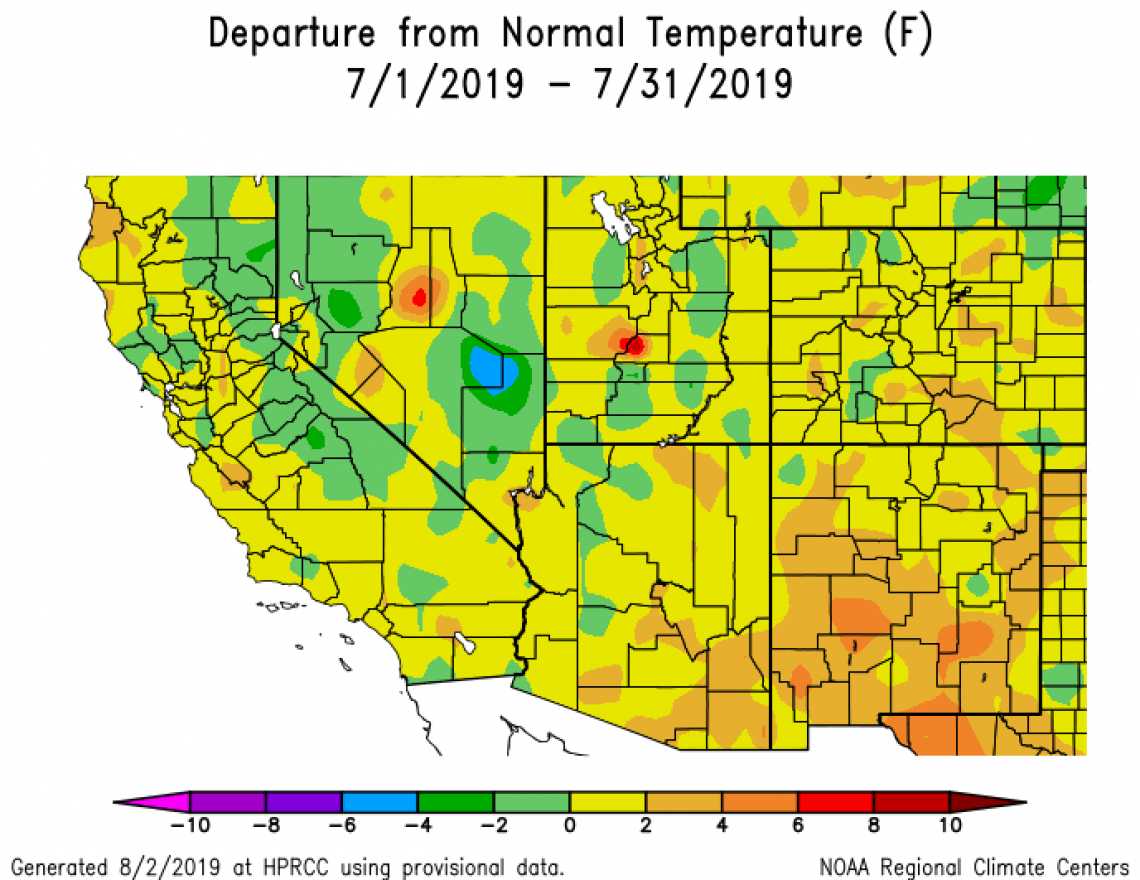
Monthly precipitation totals were less than 50% for much of Arizona, as well as northwestern and southern New Mexico (red areas on map). Despite the sluggish start of the monsoon, a few locations in the region nonetheless managed to record above-average amounts (green, blue, and purple areas on map), most notably in central and northeastern New Mexico. One potential benefit of the mostly drier-than-normal conditions is a decrease in pest and disease pressures. For more technical summaries of monsoon precipitation across and at a number of weather stations in the region, visit the Climate Science Applications Program at the University of Arizona.
2019-aug-last1m-prcp-noaa-acis.png
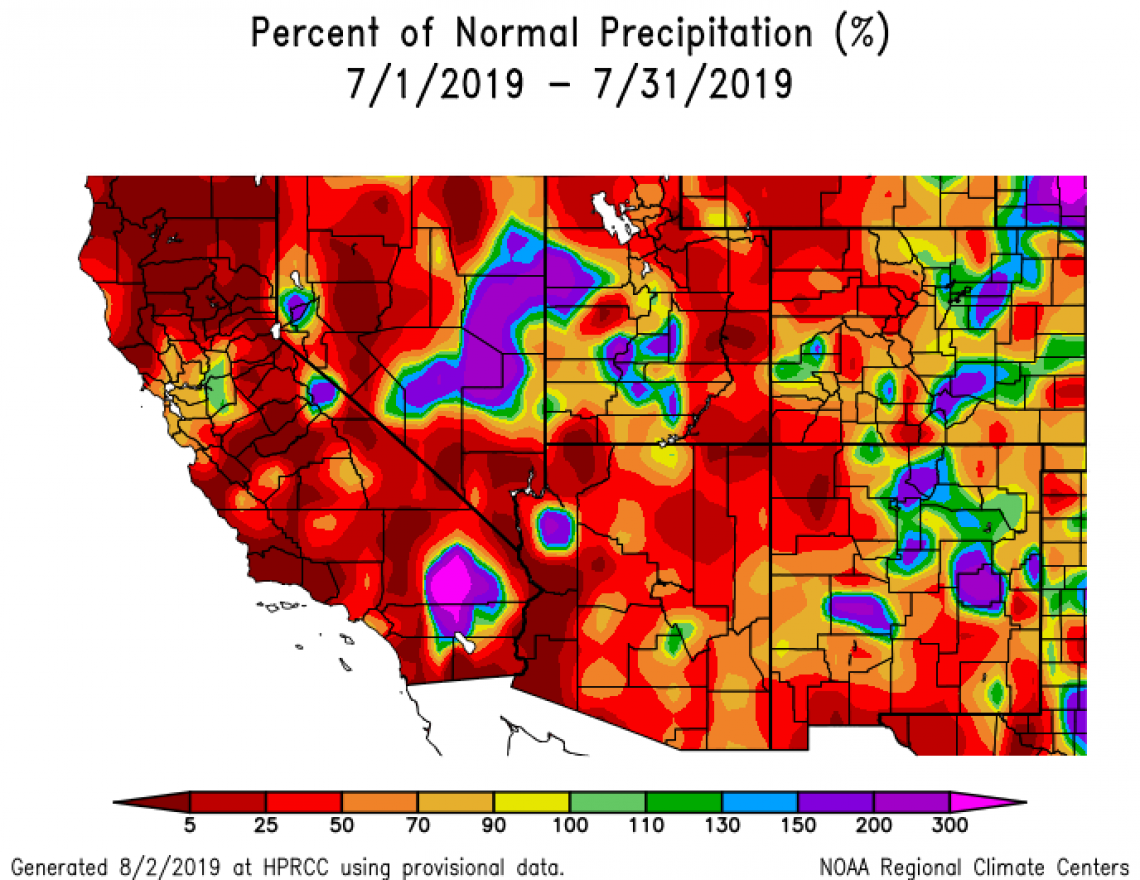
The Outlook for August Temperature and Precipitation
There is a slightly increased chance for above-average temperatures across much of the southern two-thirds of Arizona and the southern one-third of New Mexico (orange areas on map). Equal chances for above-, near-, or below-normal temperatures exist for the region (white area on map). During the summer in relatively warm winegrape-growing regions, like those in Arizona and southern New Mexico, international studies suggest that timing of vine growth stages is less sensitive to cooler- or warmer-than-normal temperatures than during the spring. For example, warmer-than-average temperatures may not significantly shorten the length of the ripening period. However, research also indicates that grape quality and composition is sensitive to temperature variations at this time of the year. Too much heat, for instance, can result in higher sugar levels and lower acidity, as well as a decrease in anthocyanins, which can have a negative effect on tannin retention, ageing, and color of red wines.
2019-aug-temp-outlook-noaa-cpc.gif
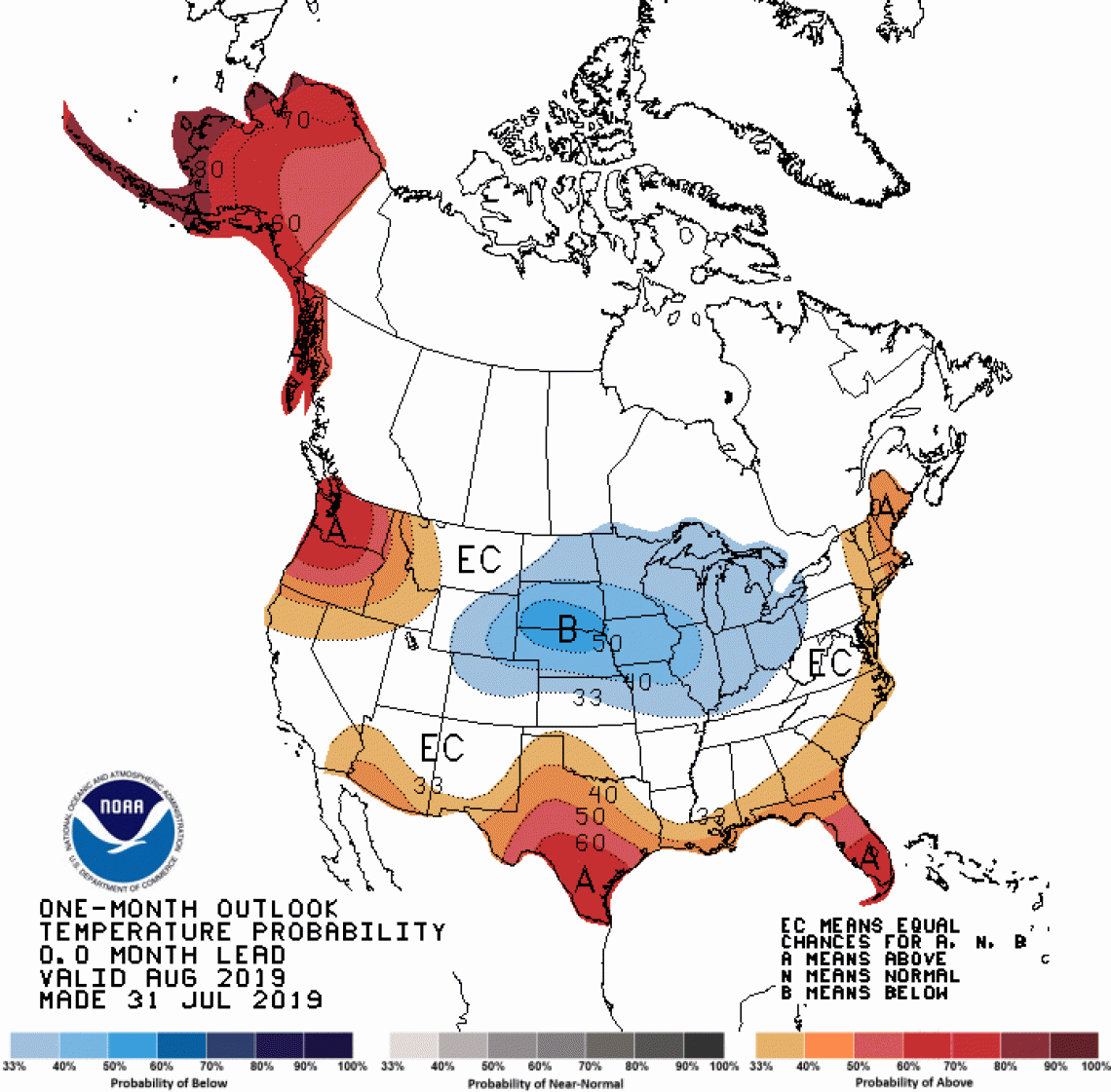
There is a slightly increased chance for above-average precipitation across almost all of Arizona and the northwestern half of New Mexico (green areas on map). Equal chances for above-, near-, or below-average precipitation exist for the rest of the region (white areas on map). Now that we’re in the middle of the monsoon and typically experience relatively higher humidity and greater precipitation across the region, wetter-than-normal conditions may further increase pest and disease pressures.
2019-aug-prcp-outlook-noaa-cpc.gif
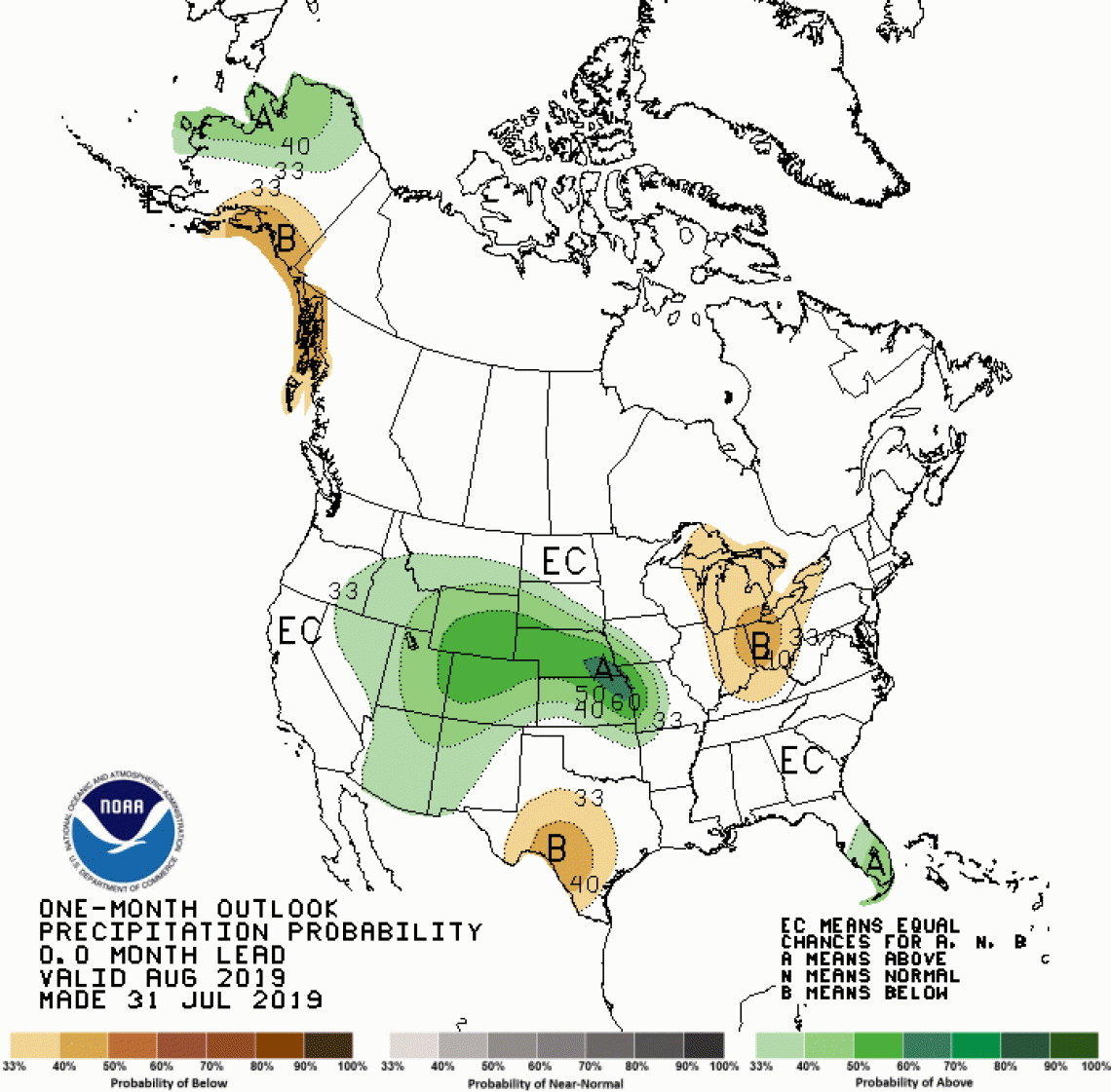
Heat Accumulation So Far This Year
A variable that helps us understand and predict the timing of vine growth stages is the accumulation of heat during the year, often quantified by the sum of growing degree days (GDDs).
As mentioned earlier, timing of vine growth stages appears more sensitive to cooler- or warmer-than-normal temperatures during the spring. The influence of relatively cool May and near-normal June temperatures across most of the region looks to still be hanging around, as we start August with accumulated GDDs that are below average values across much of Arizona (blue and green areas on map). This is the case, for example, in the Sonoita, Willcox, and proposed Verde Valley American Viticultural Areas (AVAs). In New Mexico, heat accumulations are slightly below or near average for much of the state (green and yellow areas on map).
Current accumulated GDDs also are lower than values from this time last year for several winegrape growing areas, with reports so far of ripening and harvest dates being about two weeks later than those in 2018. We’d be interested in hearing from you if you are observing similar or different conditions in your vineyard.
2019-aug-cgdd-usgs-npn.png
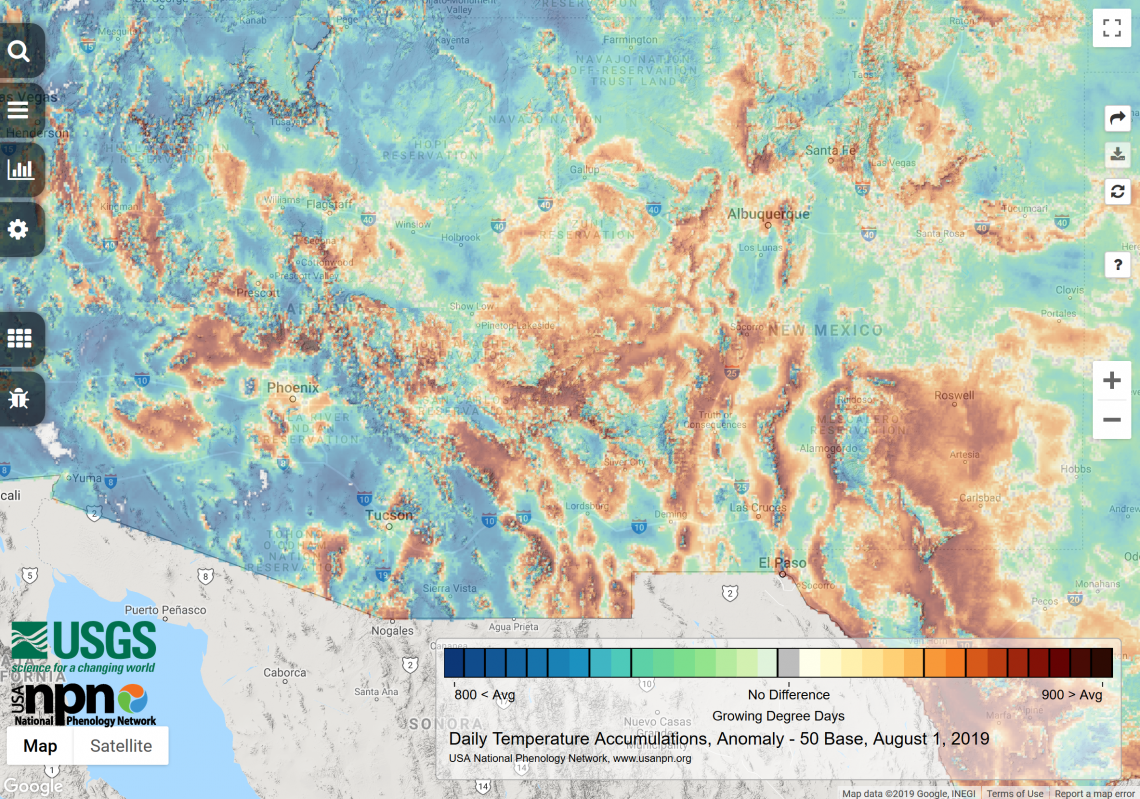
'Tis the (Hail) Season
In addition to the potential for higher pest and disease pressures as a result of higher humidity and greater precipitation, the monsoon can bring about the possibility for hail, which can significantly damage both vines and fruit at this time of the year. Following a hail event, it is particularly important to protect against rot.
Inexpensive do-it-yourself hail pads can be useful for recording events and measuring hail size, and invaluable for insurance purposes. Fortunately, we (light green areas on map) don’t experience hail events nearly as often as the southern Great Plains (yellow, orange, and red areas on map).
The relatively weak El Niño event that began in early 2019 is fizzling out, with neither El Niño nor La Niña conditions likely to occur for the rest of this year. This means one less hand on the steering wheel of our regional temperature and precipitation over the coming months.
Mentioned as of interest by several growers, we are planning to help put together ‘growing season in review’ workshops in the latter half of October for winegrape growing areas of north-central and southeastern Arizona. The basic idea is to have half a day for attendees to discuss and learn from each other on different topics like cultivar quality and yield, experienced conditions, and whether or not it was easier or harder to produce a high-quality crop in 2019. Dates and locations coming soon!
For those of you in southeastern Arizona, Cooperative Extension manages an email listserv in coordination with the Tucson forecast office of the National Weather Service to provide information in the days leading up to agriculturally important events, like late spring freezes and summer heat waves. Please contact us if you'd like to sign up.
Please feel free to give us feedback on this issue of the Climate Viticulture Newsletter, suggestions on what to include more or less often, and ideas for new topics.
Did someone forward you this newsletter? Please contact us to subscribe.
Have a wonderful August!
With support from:


